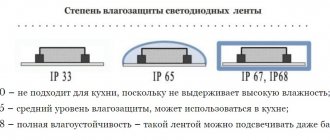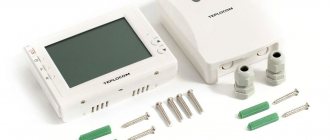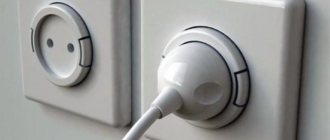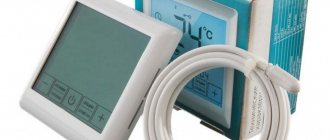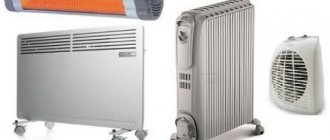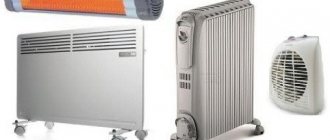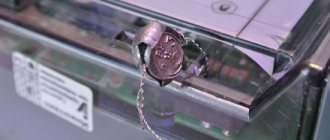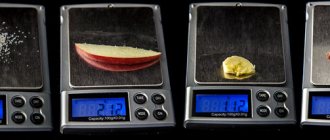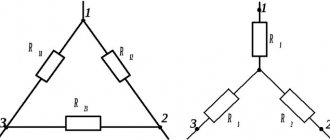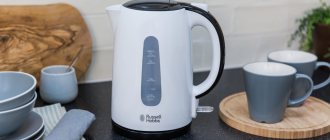SHARE ON SOCIAL NETWORKS
FacebookTwitterOkGoogle+PinterestVk
The annual increase in the cost of electrical energy forces users to think about methods of controlling its consumption and ways to save. The instructions for any equipment indicate the power of the device. However, this is an average value and may vary depending on certain factors. You can learn how to correctly calculate the electricity consumption of household appliances from this article.
The more appliances you use in your home, the higher your energy costs will be.
Computer.
By and large, if we count roughly and approximately, everything depends on the power of the power supply and the specific work that the computer is currently performing. With the declared power of the unit ranging from 350 to 550 Watts, it is unlikely to consume all of it even at full load. You can also add a monitor here - from 60 to 100 watts. Thus, the average 450 Watt power supply and 100 Watt monitor consume 550 Watts or 0.55 kW of electricity per hour. Again, these figures are greatly overestimated. For an approximate calculation, you can take almost the maximum value – 0.5 kW/h – we won’t be mistaken. When using a computer 4 hours a day, we get 60 kW/h per month. Accordingly, when used 8 hours a day - 120 kW/h, and so on.
Energy consumption
Calculating energy consumption for a house or apartment is not particularly difficult. To do this, you need to perform the following algorithm of actions:
- make a table of all electrical appliances used in the house, including lighting lamps;
- put in separate columns: device power, operating hours per day;
- for each energy consumer, calculate (by multiplying the power by the operating time) the average daily consumption;
- sum up all the obtained power values.
Such a calculation will give a real picture of electricity consumption. Using this data, you can control consumption and adjust the daily power consumption of each device.
It does not matter how power consumption is calculated or measured. The main task of the process is to correctly select the cross-section of conductors for wiring, supplying power cables and ensure that automatic protection is triggered
The cable supplying voltage to the room must withstand the simultaneous switching on of all consumers located in it for a long time. Its choice directly depends on the accuracy of determining the power of consumers.
Fridge.
The energy consumption of refrigerators is calculated over 365 days for a 220V/50Hz network. Designed for 100 liters of useful volume per day, it allows you to compare refrigerators of different sizes. Again, the amount of power consumed depends on the volume of the refrigerator and the amount of food stored in it. External conditions also leave their mark, changing depending on the time of year. The technical data sheet for the refrigerator indicates the energy consumption per year. In most cases, this figure ranges from 230 to 450 kW/h. By simple calculations, dividing this figure by 12 months, we get from 20 to 40 kW/h. Again, this number only applies under ideal conditions. In reality, it is unlikely that this value will be achieved.
Main household consumers
Each apartment has its own range of appliances and equipment. The same types of equipment may have different technical characteristics, power and energy consumption. As a result, all these factors have a significant impact on the amount of electricity consumed. Accordingly, the electricity payment for each family will be different.
In order to plan possible expenses, many owners draw up a special table indicating the main consumers, their power and duration of operation during the day.
The table clearly shows that the devices that consume most of the electricity are the refrigerator, washing machine, iron, electric kettle, computer, TV and lighting system. With these devices, the monthly total electricity consumption is, on average, 120-180 kW. These numbers may vary depending on the time of year when unscheduled equipment is used.
Unforeseen costs include small household appliances - hair dryer, coffee maker, chargers and others that provide the required level of comfort. In addition, in private country houses you can often find water pumping stations, circulation pumps in the heating system, electrical equipment for convectors, gas boilers and water heaters. Many people use electric heating boilers, electric stoves, ovens and welding equipment.
Air conditioners in hot summer months consume from 60 to 120 kW per month. Electric oil heaters turn up about the same amount in winter.
3.TV.
TVs are different. A modern cathode ray tube TV consumes from 60 to 100 W/h. On average, for calculation, we will take 100 W/h. When watching TV 5 hours a day – 0.5 kW/h. Per month – 15 kW/h. LCD TVs with a fairly large diagonal consume about 200-250 W per hour. The set brightness plays an important role in this matter. Accordingly, the number of kilowatt-hours spent per month can be safely multiplied by 1.5. It turns out from 20 to 35 kW/h. Small LCD TVs consume about the same amount as CRT TVs, or a little less: from 50 to 80 Wh - 8-12 kWh per month. Large plasma TVs consume from 300 to 500 watts per hour. If you have several different TVs, add up the values.
What expenses does this add up to over a year - simple calculations for saving
To understand how much the devices “heat” their owner, you need to analyze the electricity consumption rates, and then calculate how much time per day the switched off units continue to “eat” money.
The total annual energy consumption of certain types of appliances and devices, expressed in money, is given in the last column of the table.
| No. | Consumer name | Average electricity consumption, W/hour | The amount that will have to be paid for downtime per year, Russian rubles |
| 1 | Electric coffee maker | 4-6 | 105,80-158,70 |
| 2 | Microwave oven (no grill) | 6 | 158,70 |
| 3 | LCD TV | 11-16 | 290,95-423,20 |
| 4 | LED TV | 1-2 | 26,45-52,9 |
| 5 | Personal computer (system unit) | 1-3 | 26,45-79,35 |
| 6 | LCD monitor | 1 | 26,45 |
| 7 | Laptop charger (without consumer) | 15 | 396,75 |
| 8 | Laptop charger left on the wire | 20-30 | 529,00-793,50 |
| 9 | Phone charger, smartphone | 2-3 | 52,90-79,35 |
Please note that the calculation in the last column is based on:
- the downtime of the “devourers” is equal to 8 hours;
- total number of days in a year (365);
- the cost of 1 kW/hour, equal to 4.53 Russian rubles (taken from a simple meter).
If you expand the list of home appliances, take into account the actual time they spend in standby mode, calculate the cost of a kilowatt at the correct tariff, and then add up all the “empty” costs, then the final amount may not be so harmless.
We hope that now you understand where the readings on the electricity meter come from, and you will also be able to save your money by disconnecting passive consumers from the network.
Kettle and iron.
The real monsters of consumption in the apartment are the kettle and the iron. Working for a minimum amount of time, they consume almost as much electricity as some appliances that work all month long. With a kettle power of 1.5 to 2.5 kW/h, using it 4 times a day for 5 minutes, we get from 20 to 25 kW/h per month. It's almost the same story with the iron. Its power is approximately the same as that of a kettle, and if you iron 3 times a week for 1 hour, you get 25 - 30 kW/h per month.
These are just some of the electricity consumers in your apartment. But there are also lighting fixtures, vacuum cleaners, dishwashers, heated floors, microwave ovens, chargers for mobile phones and laptops.
As a result, by simple addition, we get an approximate consumption of 200 to 300 kW/h per month. Again, excluding the electric stove.
Consider all the nuances
The material and shape of the sole, power and functionality are the main criteria when choosing an iron. But there are other nuances that need to be taken into account.
- Iron weight. 1.5 kg is considered optimal. A light iron will have to be pressed against the ironing board when ironing out strong wrinkles. If it’s heavy (around 2 kg), your hands will quickly get tired.
- Cord length. Ironing is convenient if the length of the wire is 1.5–2 meters. It is desirable that it be mounted on a hinge and rotated 360 degrees. There are cordless models, where the iron is heated on a special stand or runs on a battery. This increases the maneuverability of the device. But if there is a lot of ironing, you will have to constantly recharge.
- The handle should fit into your hand like a glove. A good solution is a rubberized handle.
- The reservoir should be transparent or translucent so that it is convenient to monitor the water level. So that the liquid does not have to be added too often, the volume of the reservoir should be 200–300 ml.
- Price. The average price tag for a powerful iron with a ceramic sole and several basic functions (for example, constant steam supply and auto shut-off) is about 3,000 rubles. But the range of prices for irons is very wide. It all depends on the brand, sole material, power and additional functions.
How to save on energy consumption?
According to the Decree of the Government of the Russian Federation dated December 31, 2009 No. 1222 (as amended on December 30, 2011) “On the types and characteristics of goods, information about the energy efficiency class of which must be contained in the technical documentation attached to these goods, in their markings, on their labels , and the principles of the rules for determining the energy efficiency class of a product by manufacturers and importers” the energy saving class must be indicated
The list of these goods includes mainly household appliances:
- freezers,
- refrigerators,
- washing machines, including those with and without a manual spin device,
- dishwashers,
- air conditioners (split systems),
- electric stoves and electric ovens,
- microwaves,
- TVs,
- electrical appliances for heating and heating liquids (boilers, water heaters),
- incandescent lamps,
- monitors,
- printers.
Which devices really suck energy in standby mode?
Transformer chargers do waste electricity. But in everyday life, such power supplies are not often found and it is unlikely that anyone would think of leaving them in the outlet. What comes to mind is a charger for a car battery, a power supply for an LED strip, a power supply for a laptop and a charger for AAA batteries. Modern lightweight charging transformers do not have transformers in their design.
But the computer took 1.3 watts from the network when turned off, the 23″ monitor took 0.8 watts. The microwave in standby mode consumes as much as 1.6 watts for the glowing clock, which I still can’t set up (and after measuring it, I still unplugged it...).
We don’t keep televisions; devices with a remote control or a so-called “soft” start - they eat quite well. Plus these annoying LEDs are everywhere, which also need energy.
A multicooker in standby mode consumes 1.4 watts, a gas double-circuit boiler consumes 2 watts.
The electricity consumption in standby mode for the kettle, toaster and table lamp is zero, and I don’t see the point in checking the refrigerator, no matter how much you “eat” - you can’t get anywhere.
We use an electric meter
The third method is that almost all metering devices are equipped with a light indicator; the number of flashes means some kind of power consumption imp/kW.
We disconnect all consumers in the apartment, leaving only the device of interest connected. Within 15 minutes, we count the pulses and multiply by four (to get the number per hour). Having found out the figure, divide it by imp/kW and find out the power of the unit.
You can also record the meter reading and turn on the electrical appliance whose consumption we are trying to determine for some time, preferably for an hour. We record new readings, subtract the old ones from them, and as a result we find out the approximate power.
An electronic meter allows you to view all parameters in real time: current, electricity consumption, network voltage, by going through the menu of the metering device. We talked about how to take readings from an electric meter in the corresponding article!
An analogue of an electric meter can be a household wattmeter, with which you can quickly and accurately determine the power consumption of electricity by the device. The video below clearly demonstrates the operation of this device:
